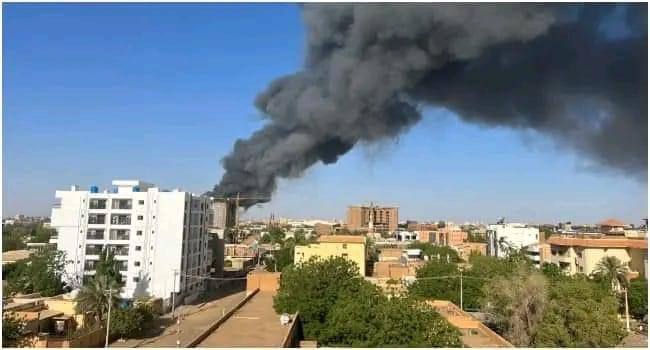Coup’s in Sudan have now become such the norm that our friends and partners initially simply shrugged off the latest Sudan crisis. Yet as events move into their 10th day there is string evidence that things might well get worse before they get better.
To read about the initial Sudan Crisis click here.
What has happened so far?

Fighting initially began on April 15th between forces loyal to the Sudanese Armed Forces and those of the paramilitary Rapid Support Forces.
Initially it seemed like a power play that the Sudanese military would quickly quell, but what has instead happened is that as things drag on Sudan is looking closer than ever to what everyone dreads, a f all blown civil war.
From Independence to Dictatorship
Essentially the crisis in Sudan has for all intents been a century in the making. Formerly a condominium between Egypt and the British Empire, the reality on the ground was that it was a British colony.
The country though sought and got its independence on January 1st 1956 as the Republic of Sudan and the biggest country at the time in Africa. What has largely followed has been coup after coup, military rule and a brutal civil war between north and south.
Ironically the most stability the country has seen, but also the cause of much of the current problems was the 30 year rule of Omar Al-Bashir between 1989 and 2019. During this period he not only made “friends” with Osama Bin-Laden, but also enshrined Sharia law onto the whole country, including the Christian and animists of the south.
This would eventually lead to the independence of South Sudan in 2011, although sadly it too is still ravaged by Civil War and rampant corruption.
Yet the independence of South Sudan did not improve the lives of the people and in fact merely emphasized the core route of many of the problems in Sudan, that of race. Sudan had essentially been ran by an Arab elite, which in part was what led to the fighting in Darfur, where the people are Muslim, but black African.
As one South Sudanese Priest in Khartoum put it “Everyone thought it was about religion, but look at me, look at the people in Darfur. It was all about race”.
The Modern Roots of the Sudanese crisis

Ion 2019 in almost hangover to Arab Spring Bashir was overthrown by the military and for a while at least there was hope. A mixed civilian-military government was formed and all players spoke of eventually moving to full civilian rule.
Unfortunately this was ended in 2021 when the military again took full control of the country. Since then there have regularly been protests, but as one of our Sudanese contacts put it “They are peaceful protests, yes, but they are also completely pointless. Nothing gets achieved”.
A member of the Sudanese Communist Party his opinion was that the democratic forces would have to take up arms, but alas this did not happen and now the two main fighting forces are merely military factions who argue about when there should be civilian rule.
The slow drift to anarchy in the Sudanese crisis
While no one misses the rule of Omar Al-Bashir what the regime did give was some form of stability. Since his overthrow and the content change of governments the country has almost drifted into warlord territory, with different areas controlled by different tribes and clans.
Alongside this foreign forces have also started to throw around their weight, particularly at the borders, but also more tellingly with regards to natural resources. In 2019 we managed to visit Bir Tawil an area rich in gold that was being exploited by the Ababda Tribe, complete with modern Russian assault rifles.
To read about the strange tale of Bir Tawil click here.
By our return in 2022 the tribe was now in control of the town of Abu Hamad all the way up to both Bir Tawil and the Egyptian border. And as to what would happen if we were to go there “You will be shot” we were abruptly told by a member of the tribe.
The big difference here though was that in 2019 the tribe still feared the central government, but nowadays there is no need to fear people that are not there anymore. This has been shown by where the majority of the fighting has taken place, in large government controlled areas, not those under the control of other actors.
And it is for this reason that things get even more scary, with forces in places such as Darfur and Abyei no doubt watching with a keen eye and ready to punch if things do change.
What next for the Sudan Crisis?
Currently the best, or rather least worst scenario would be for the Sudanese military to beat the RSF and to essentially then be forced into moving things quicker to democracy.
If though the war ravages on, political parties and neighboring countries will undoubtedly take sides and the ever suffering Sudanese people will be plunged into a civil war that could shatter the nation into pieces.
It also risk spilling over into the countries that it borders, such as into South Sudan, the Central African Republic, Libya, Chad, Ethiopia and Eritrea in what could end up a very long and drawn out regional conflict.
For now though we wait and merely hope for the least of a bunch of a bad outcomes to prevail.

